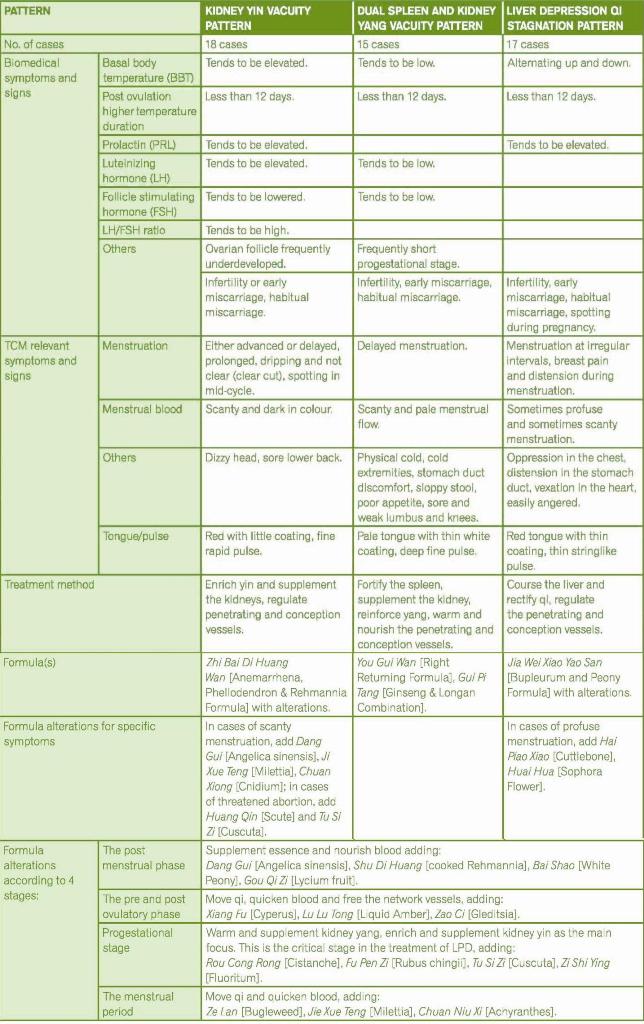TCM Principles - TCM Pattern Differentiation Treating 50 Cases of Corpeus Luteal Insufficiency
TCM Principles
TCM Pattern Differentiation Treating 50 Cases of Corpeus Luteal Insufficiency
Excerpt of a study by Huang Bangping, originally published in Henan Traditional Chinese Medicine Magazine, December 2003, Vol.23, No. 12. Edited by Dagmar Riley
Corpus luteal insufficiency (LPD Luteal Phase Defect) denotes underdevelopment of the ovarian follicle, defect in formation of the corpus luteum, or insufficient function of the corpus luteum, resulting in an insufficient luteal secretion of progesterone or a disturbed reaction of the endometrium to receive the corpus luteum. Manifestations include PMT, early miscarriage, and infertility. The author of this article uses TCM pattern differentiation to treat LPD and has obtained very good results which are summarised below.
1. Clinical Data
AII 50 cases are outpatients
Age: Between 18 to 24 years: 25 cases, between 25 to 44 years: 20 cases, between 45 to 50 years: 5 cases.
Shortened menstrual cycle (cycle shorter than 21 days): 15 cases, prolonged menstruation (menstruating longer than 7 days): 5 cases, infertility: 20 cases, early miscarriage: 10 cases.
2. Treatment Method

One month was defined as one treatment cycle, the maximum treatment consisting of six treatment cycles.
3. Curative effect criteria and results
3.1 Curative effect criteria
Cured: Disappearance of clinical symptoms, regular cycle, BBT rise post ovulation for three months consecutively, the higher temperature is steadily sustained for more than 12 days, gestation.
Marked results: General disappearance of clinical symptoms, generally regular cycle, BBT rise post ovulation , higher temperature sustained for more than 12 days, consecutively for three months.
3.2 Results of treatment
Kidney yin vacuity pattern (18 cases): 9 cases cured, 6 cases marked results, 2 cases show results, 1 case no results, overall success rate of 94.44%
Dual spleen an kidney yang vacuity pattern (15 cases): 8 cases cured, 3 cases marked results, 3 cases show results, 1 case no results, overall success rate of 88%
Liver depression qi stagnation (17 cases): 12 cases cured, 2 cases marked results, 2 cases show results, 1 case no results, overall success rate of 94.44%.
*Reproduced with kind permission from Health World Limited - Australia and New Zealand